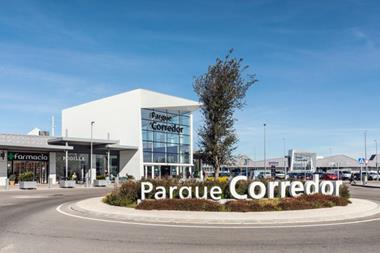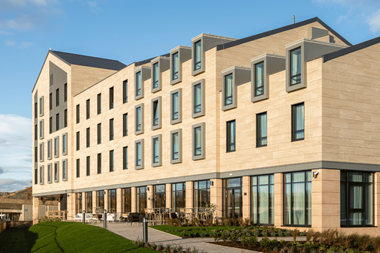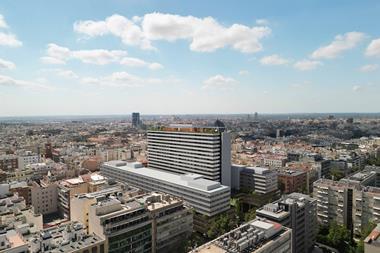A report published this week by CBRE shows that retail rents grew faster on average in EMEA over the past year than in any other region in the world.
The strong growth in EMEA was led by London which recorded the highest prime retail rental growth globally, with an annual uplift of no less than 53.8%. Two other European cities – Rome and Milan – also featured in the top 5 with increases of 28.9% and 20% respectively.
Overall, EMEA registered 6.2% growth in prime rents, the highest of the three regions in the survey. The Americas posted an increase of 3.9% while Asia–Pacific recorded a 2.1% rise, bringing the global average to 3.7%.
The significantly higher than average growth recorded in EMEA marks a break with previous years since the crisis when retail rental growth was much ‘quieter’, Andrew Phipps, head of UK & EMEA Retail Research at CBRE, told PropertyEU.
London was the greatest beneficiary due to the sheer amount of pent-up demand, he added. Ralph Lauren and Hugo Boss have reportedly paid record amounts of up to $2,300 per sq ft per annum for units on London’s premier shopping destination Bond Street. ‘There’s huge value in being there and there are just no vacancies,’ Phipps noted.
Nearby shopping locations such as Mount and Sloane Streets also witnessed ‘dramatic’ rises, he said, but added that these areas were coming from a lower base.
Good news for shopping centre owners
The CBRE report must be music to the ears of UK retail REIT Hammerson and its financial partner Standard Life Investments which this week shared their plans for the £1.4 bn (€1.6 bn) redevelopment of Brent Cross Shopping Centre in London ahead of a public consultation.
The scheme is part of a larger £4.5 bn regeneration plan for Brent Cross and Cricklewood, for which Hammerson and Standard Life already have outline planning consent, granted in 2010. The joint venture partners are seeking to remodel the centre to host over 200 retail brands, 40 new restaurants, a cinema complex and hotel accommodation.
Prime shopping centres in London and across the UK are commanding very strong rental growth as well as the premier high street destinations, Phipps confirmed. Upwardly trending rents are particularly visible in the stronger centres that are dominant in their catchment areas while secondary centres are more challenged, he added.
While rental growth on London’s premier high streets was spectacular in the past year, a significant number of UK cities outside the capital likewise turned in robust growth, according to CBRE’s latest report. Leeds was the best performer of the regional UK cities, coming in at number 15 with 8.7%, followed by Liverpool with 6.4%, Glasgow with 5.2%, Edinburgh with 5%, and Manchester with 3.6%.
Given the link between high street and shopping centre rents, the strong growth in the UK’s regional cities also spells good news for Dutch pension asset manager APG which earlier this month acquired a 75% stake in the St James shopping centre in Edinburgh from TH Real Estate ahead of a major redevelopment of the complex. Like Brent Cross in London, the 1.7 million sq ft (158,000 m2) St James centre will undergo a major revamp which is slated to transform the city centre of Edinburgh.
Picture is patchy across Europe
CBRE’s Phipps is optimistic that high-street rental growth in London and the regional cities in the UK will continue in the coming years, although there may be a slight pause and the UK capital may not see the 50%-plus increase that it recorded this year. For the foreseeable future, however, the premium end of the market in particular is on a roll thanks to severe supply shortages and buoyant consumers.
But the picture is by no means uniform across Europe. A significant number of cities in Central and Eastern Europe including Sofia, Warsaw, Budapest and Prague turned in strong rental growth on their premier high-street locations with increases ranging from 5% to more than 12.%. Smaller European capitals like Stockholm and Madrid likewise recorded rises of more than 5%.
With the exception of Berlin, however, some of Germany’s leading cities such as Munich, Hamburg, Frankfurt and Dusseldorf posted no growth at all. And there were no winners either in the French contingent with Paris, Lyon and Lille likewise seeing no rental increases. Indeed, Marseille turned in a negative performance of -11.8%, putting it into the same league as Istanbul with -16.7%.
All in all, rental growth was recorded in just 50 of the 92 global cities that CBRE covered in its report and half of those that turned in no growth are located in Europe. In other words, the robust average growth figure of 6.2% reported for EMEA masks a large number of underperformers across the Continent as well as the outperformers in the UK.
Judi Seebus
Editor in Chief










